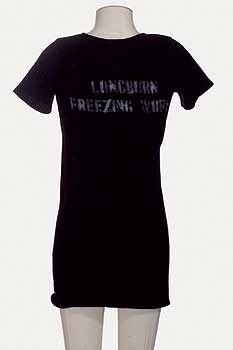Objet d'histoire tell the story of the Manawatu

A group of historians have opened the cupboard at Palmerston North’s Te Manawa museum and blown the dust off 40 objects that shed light on the history of the Manawatu region and it’s place in the nation and the world.
The 40 objects were chosen to mark the 40 years anniversary of Te Manawa museum.
Ranging from the treasured to the everyday, they feature in the book, Te Hao Nui – The Great Catch, being launched on December 9.
Co-edited by former Te Manawa curator Fiona McKergow and Massey University School of History, Philosophy and Classics head Dr Kerry Taylor, Te Hao Nui uses objects to tell local stories in a national and global context.
Each chapter focuses on a specific object from the collection, telling the story of that particular piece and what it teaches us about the past and present concerns of society.
"For example, I’ve written about the black singlets from the Longburn Freezing Works,” Dr Taylor says. “Their story is in part the history of the works from the 1890s to 1980s, which was important locally, but is also used to explore the way the black singlet is a significant cultural icon, often seen in a benign way and as a symbol of national unity.
"However, the black singlet was also a symbol of radicalism, at Longburn and in the meat industry more generally. In some ways it also represents the culture of the works, the strong union movement that was very active at the time, which had its foundations in a close-knit community and family engagement with the works.”
The chapters focus on a wide variety of objects – from a marching drum from the 28th Mäori Battalion; to Joyce McKelvie’s Queen Carnival costume, used to crown the Queen of the Carnival at WW1 fundraising fetes in 1915; to the inoculation certificates of Joe Yue Sing and Joe Kong She, Chinese immigrants who help tell the story of the Chinese market gardening families in Manawatu.
There are eight entries translated into Mäori, including a chapter on several pou, which were once gatekeepers at Rangitane’s Pukeotara Pa. The entry charts their subsequent journey beyond the region. Two are now in Paris and others went to the Dominion Museum in Wellington before being returned to Te Manawa.
Another chapter features a chintz covered chair made from used Kerosene can boxes, which is “old and dishevelled and lined with old newspapers but reflects the make do attitude of the 1920s”, Dr Taylor says.
Dr Taylor says the book is significant, not only as a record for the museum and the local community, but because it places emphasis on objects and what they can contribute to our knowledge about our history.
“Historians tend not to value objects as a source of history. Our argument is that objects themselves tell a lot about our past. This book is an attempt to put objects at the centre of story telling, connecting distinctly local history to a national and global context, showing how local stories are part of a bigger picture.
“It also enables us to look at the history of collecting at Te Manawa and examine what was considered worth collecting at different times. The items in the collection are not just precious in a fine art or monetary sense, although many are.
“Working with objects can bring the past to life in a tangible way. The quirky can be as appealing as the aesthetically pleasing and everyone will find something different that appeals to them and along the way learn something fresh about the past.”
He says the focus on a "material culture" is part of an international trend. The BBC recently produced a series that used objects as the centre of historical storytelling.
The book is a project of the Te Manawa Museum Society, which was seeking to bring the many pieces in the museum that “do not see the light of day” out into the open, Dr Taylor says. Eleven of the book's 35 authors are Massey staff Ms McKergow is a graduate of the Museum Studies programme. Among the contributors are members of local iwi and staff from Te Manawa and the national museum Te Papa.